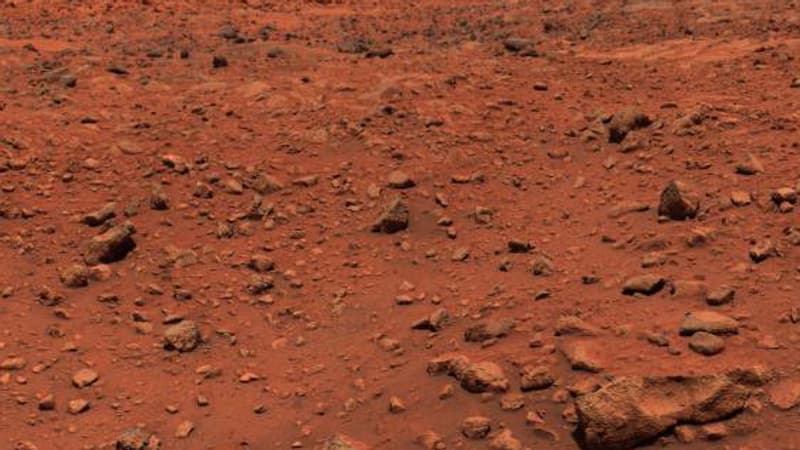On July 20, 1976, the US space agency’s Viking 1 probe landed on Mars and sent back the first snapshot of the surface. The very rocky landscape of the red planet puzzles scientists, who believe that a cold sea once existed there.
Five decades later, the mystery may be solved. According to a study published in the scientific journal scientific reportsand detected by CNN, the probe actually landed in one of the impacts left behind by an asteroid that struck the Martian surface and fell into the ocean 3.4 billion years ago.
570,000 square kilometers would have been flooded
The analyzes focused on a 110-kilometre crater, recently named “Pohl”, in an area north of the Martian equator.
The crash would have caused a large tsunami, carrying debris the size of a bus and reshaping part of the landscape. 570,000 square kilometers would have been flooded. A second, a few million years later, it would have collided with a frozen ocean, generating waves of ice and mud that engulfed the land.
One of the simulations carried out by the American researchers suggests that the asteroid that crashed into Mars would have released an energy equivalent to a TNT explosion of 13 million megatons. By comparison, the most powerful nuclear weapon ever tested, the Tsar Bomba, launched around 57 megatons.
According to the study authors, these hypotheses are corroborated by corridors carved by the waves, which traced the contours of fields dotted with blocks of rock and craters, once filled with now evaporated water.
The asteroid impact could even have had consequences for the Martian climate, sending water vapor into the atmosphere, creating rain or even snow.
However, researchers remain cautious. The existence of an ocean to the north of the red planet is still the subject of debate in the scientific community.
Source: BFM TV


